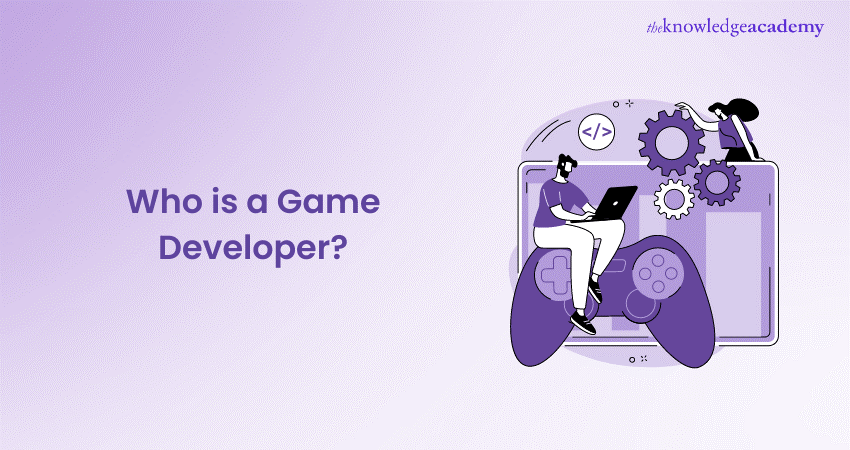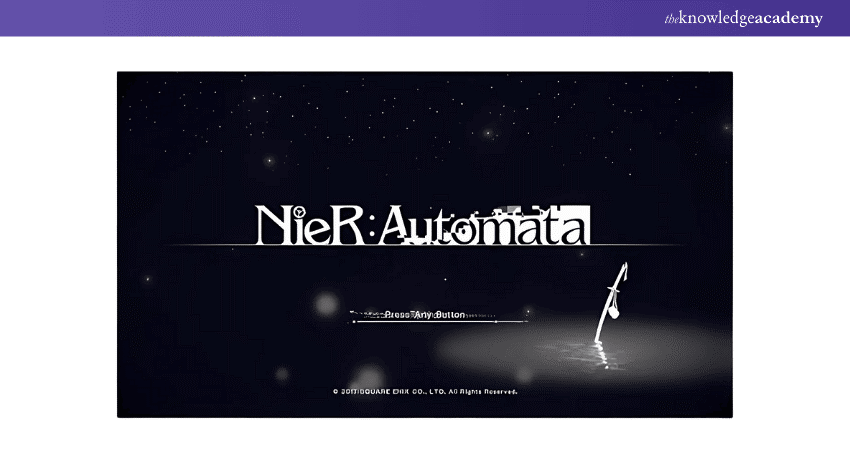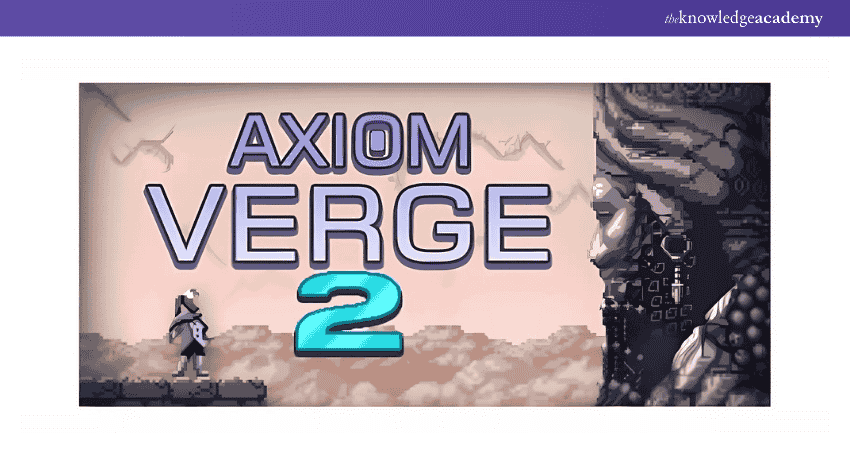We may not have the course you’re looking for. If you enquire or give us a call on +353 12338944 and speak to our training experts, we may still be able to help with your training requirements.
We ensure quality, budget-alignment, and timely delivery by our expert instructors.

Video games hold a special place in many people's hearts and are a huge part of pop culture. For some, these games bring back nostalgic memories of 8-bit classics, while for others, they are something exciting to look forward to with each new release. Game Developers pour their passion and creativity into crafting these unforgettable experiences, keeping the gaming community thrilled and engaged.
According to Statista, the video games market is expected to reach a staggering £271.06 billion by the end of 2023. This highlights the promising career opportunities in the gaming industry, including for indie Developers. If you love video games and want to learn more about the people and processes behind their creation, this blog is for you. Keep reading to discover What is a Game Developer, their key roles, responsibilities, types, and much more.
Table of Contents
1) What is a Game Developer?
2) What Do Game Developers Do?
a) Designing Concepts
b) Performing Programming
c) Bringing Visuals To Life
d) Creating Animations
e) Sound Designing
f) Game Testing
3) Are there different kinds of Game Developers?
4) Conclusion
What is a Game Developer?
A Game Developer is a professional who programs video game structures and mechanics, taking a project from its beginning concept to the final product. They are responsible for creating the core functionality of games, including gameplay mechanics, user interfaces (UIs), and interactive elements. This role requires a profound understanding of coding, problem-solving skills, and creativity to bring a game to life.
Game Developers can work on various projects, from large-scale AAA gaming studio productions to smaller, self-published indie games. In large studios, they often collaborate with extensive teams and resources, while in indie projects, they might handle multiple roles. Regardless of the project's size, Game Developers play a vital role in reshaping the gaming experience and ensuring the final product is engaging and enjoyable for players.
What Does Game Developers Do?
Game Developers play a crucial role in bringing video games to life and handling various aspects of the development process. Their roles and responsibilities can widely vary depending on the studio's size and their specific role within the team. From Indie Developers managing everything on their own to specialised teams in larger studios, each Developer's contribution is vital. Here are some key responsibilities:
1) Designing Concepts
This involves the initial planning phase, where Developers decide on character designs, game genres, play styles, and level progressions. It sets the overall experience and mood of the game, guiding Illustrators, Animators, and Artists to ensure a cohesive narrative and visual style from the start.
2) Performing Programming
Programming is crucial as it transforms character designs and game ideas into functional video games. Developers use languages like C++, C#, Python, and frameworks like Py.Game and Py.Turtle. This phase also includes using No Code (NC) or Low Code (LC) tools, allowing beginners to explore game development without extensive coding knowledge.
3) Creating Animations
This involves creating soundtracks, background music, and sound effects to enhance the gaming experience. This includes using trained voice actors and interactive sound effects to differentiate characters, adding depth and immersion to the game through carefully crafted audio elements.
4) Sound Designing
This involves creating soundtracks, background music, and sound effects to enhance the gaming experience. This includes using trained voice actors and interactive sound effects to differentiate characters, adding depth and immersion to the game through carefully crafted audio elements.
5) Game Testing
Game testing is essential for identifying and fixing bugs before the game's release. Developers collect feedback from Testers during Alpha and Beta releases to make necessary improvements. This process ensures the final product is polished and error-free, enhancing the overall player experience and satisfaction.

Design and develop Unity Games like a PRO- Try our Game Design and Development with Unity Training today!
Are There Different Kinds of Game Developers?
Game Developers can be grouped based on their specialisation and the type of games they work on. However, when it comes to development practices, they're usually divided into four main categories. Here are the types of game developers:
1) First Party Game Developers
First-party Developers normally refer to any video game development company that is responsible for creating a console. Some examples of this are PlayStation, Xbox, and Nintendo.
These Developers are responsible not only for making a profit through their games but also for giving a competitive edge to the console. These Developers can create a game dedicated to a particular console, leading to fans purchasing a particular console if they wish to play it.
First-party Developers tend to have a financial advantage, as they are backed up by a huge Multinational Corporation (MNC). However, this also means that MNCs can suffer huge losses if a game does not do well in the market.
If a game becomes popular with the audience, the company can make a huge profit as it is not obligated to make royalty payments, as it would with other Developers.
2) Second Party Game Developers
Read our detailed Game Developer Job Description to understand the skills and responsibilities required for this role!
Second-party Developers is a terminology coined by the gaming community over time as video game development became more specialised. These Developers are normally responsible for creating a game as an independent studio.
However, a game console company purchased the rights to that game. As a result, these developers have complete freedom in how they wish to approach the development process of a game, but they cannot release the game for any other company.
An excellent example of the term Second-party Developer is from Fromsoft Studios in the development of Bloodborne in the year 2015. Bloodborne is considered one of the best games from Fromsoft, and it is notable for its high-speed combat and high-scale difficulty.
3) Third-Party Game Developers
Third-party Developers are studios that create a game and are also responsible for publishing it. These games are accessible on different consoles, such as Xbox, Switch, and PlayStation, and they are also available on common platforms such as personal computers (PCs).
The advent of Third-party development led to a revolution in how video games are created and how much freedom the Developers have. Most Game Developers were in-house during the era of 8-bit and 16-bit pixel games, which were released for NES, SNES and Sega. This meant the Developers were the company's employees, who created the console to play the games on.However, in 1979, this changed as Atari Programmers left their home company to start creating games by the name Activision, which were supported for the Atari console but were not directly owned by it.
In the modern age, a large majority of games are third-party. This gives the Developers a choice between different consoles without losing the freedom to profit from different consoles if they choose to do so. This choice of which console a game is made for is vital, as one console may have specifications that others do not. However, most third-party development games are also released for PC, allowing people to adapt their system to accommodate the game.
4) Indie Game Developers
Indie Game Developers refer to games created by a small team and not dependent on a single publisher. Indie Developers tend to have a small workforce, sometimes being as low as a single person working on an entire game.
A notable example of such a developer is Thomas Happ, who was responsible for creating Axiom Verge and Axiom Verge 2. He was responsible for working on the game as a programmer, artist, and musician.

Indie Game Developers can form a contract with a console company, which allows them to release their games on a specific console. Additionally, certain Developers, such as Yacht Club Games, and their titles, such as Shovel Knight, can be funded by the audience, relying on the internet and the words of the gaming community.
Enhance your Unreal projects with expert C Programming techniques- Join our C++ Programming For Unreal Game Development Training today!
Conclusion
As we conclude this blog on “What is a Game Developer?” we hope it inspires you to pursue a Career in Game Development. Certain games have undoubtedly brought you immense joy, and it is only natural to desire that others experience those same moments of enjoyment. The dedication of game developers to their projects, including implementing advanced concepts like the Entity Component System, deserves our respect and admiration. Thank you for reading and may your game development journey be both rewarding and fulfilling.
Build stunning 3D worlds with Unreal Engine 4 skills- Join our Unreal Engine 4 Game Development Training today!
Frequently Asked Questions
Is a Game Developer a Good Career?

Game development can be a lucrative career for creative individuals. It offers opportunities for innovation and rapid growth. However, it requires technical expertise and persistence. Although the industry is highly competitive, it offers great job satisfaction and potential for growth.
How Many Hours Does a Game Developer Work a Day?

Game Developers typically work around 8 hours a day, but this can vary. During crunch times, such as approaching project deadlines, they may work longer hours, sometimes reaching 10–12 hours per day. Work-life balance can be tough in this field, depending on the company and project phase.
What are the Other Resources and Offers Provided by The Knowledge Academy?

The Knowledge Academy takes global learning to new heights, offering over 3,000 online courses across 490+ locations in 190+ countries. This expansive reach ensures accessibility and convenience for learners worldwide.
Alongside our diverse Online Course Catalogue, encompassing 19 major categories, we go the extra mile by providing a plethora of free educational Online Resources like News updates, Blogs, videos, webinars, and interview questions. Tailoring learning experiences further, professionals can maximise value with customisable Course Bundles of TKA.
What is The Knowledge Pass, and How Does it Work?

The Knowledge Academy’s Knowledge Pass, a prepaid voucher, adds another layer of flexibility, allowing course bookings over a 12-month period. Join us on a journey where education knows no bounds.
What are the Related Courses and Blogs Provided by The Knowledge Academy?

The Knowledge Academy offers various Game Development Training, including 3D Game Development Training, Game Design and Development with Unity Training, and Unreal Engine 4 Game Development Training. These courses cater to different skill levels, providing comprehensive insights into Game Developer Salary.
Our Programming & DevOps Blogs cover a range of topics related to Software Development Management, offering valuable resources, best practices, and industry insights. Whether you are a beginner or looking to advance your programming skills, The Knowledge Academy's diverse courses and informative blogs have got you covered.
Upcoming Programming & DevOps Resources Batches & Dates
Date
 Unreal Engine 4 Game Development Training
Unreal Engine 4 Game Development Training
Fri 28th Feb 2025
Fri 4th Apr 2025
Fri 27th Jun 2025
Fri 29th Aug 2025
Fri 24th Oct 2025
Fri 5th Dec 2025






 Top Rated Course
Top Rated Course



 If you wish to make any changes to your course, please
If you wish to make any changes to your course, please


